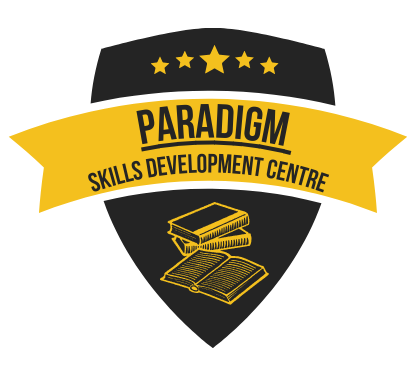- Microbiological Hazards
- Food Contamination
- Food Poisoning and Foodborne Illnesses
- Hazard Analysis and Critical Control Points (HACCP)
- Personal Hygiene and Food Handling Practices
- Cleaning and Sanitation
- Food Safety Legislation and Regulations
- Allergen Management
Microbiological Hazards
- Identification: Recognize different types of microorganisms that can contaminate food, including bacteria, viruses, parasites, and fungi.
- Characteristics: Understand the characteristics of common foodborne pathogens, such as their growth requirements, survival mechanisms, and modes of transmission.
- Risk Assessment: Assess the risks posed by microbiological hazards in food and identify potential sources of contamination.
- Prevention Strategies: Implement preventive measures to control microbiological hazards, including proper food handling, storage, cooking, and hygiene practices.
- Monitoring and Control: Monitor food production processes and establish control measures to minimize the growth and spread of harmful microorganisms.
Food Contamination
- Types of Contamination: Differentiate between biological, chemical, and physical contaminants and understand how they can enter the food supply chain.
- Sources of Contamination: Identify common sources of contamination in food production, processing, distribution, and preparation.
- Cross-Contamination: Recognize the risk of cross-contamination and implement measures to prevent the transfer of harmful microorganisms, allergens, or other contaminants between food, surfaces, and equipment.
- Mitigation Strategies: Implement control measures to reduce the risk of contamination during food handling, storage, transportation, and service.
- Hazard Analysis: Conduct hazard analysis to identify critical control points (CCPs) where contamination must be controlled or eliminated to ensure food safety.
Food Poisoning and Foodborne Illnesses
- Symptoms and Causes: Identify common symptoms of foodborne illnesses and understand the microorganisms responsible for causing them.
- Epidemiology: Understand the epidemiology of foodborne diseases, including factors influencing their occurrence, distribution, and prevalence.
- Public Health Impact: Recognize the public health significance of foodborne illnesses and their potential impact on individuals, communities, and healthcare systems.
- Prevention and Control: Implement preventive measures to reduce the risk of foodborne illnesses, including proper food handling, storage, cooking, and sanitation practices.
- Reporting and Response: Know the procedures for reporting suspected cases of foodborne illness and responding to outbreaks in food establishments.
Hazard Analysis and Critical Control Points (HACCP)
- Principles of HACCP: Understand the seven principles of HACCP and their application in identifying, evaluating, and controlling food safety hazards.
- Hazard Analysis: Conduct hazard analysis to identify biological, chemical, and physical hazards associated with specific food processes or products.
- Critical Control Points (CCPs): Identify critical control points where control measures can be applied to prevent, eliminate, or reduce hazards to acceptable levels.
- Monitoring and Verification: Establish monitoring procedures and verification activities to ensure that CCPs are under control and effective in maintaining food safety.
- Documentation and Records: Maintain accurate records of HACCP plans, monitoring results, corrective actions, and verification activities to demonstrate compliance with food safety requirements.
Personal Hygiene and Food Handling Practices
- Personal Hygiene Practices: Adhere to strict personal hygiene practices, including handwashing, proper attire, and hygiene habits, to prevent the contamination of food.
- Illness Awareness: Recognize the importance of staying home when experiencing symptoms of illness to prevent the spread of pathogens to food and fellow food handlers.
- Hygienic Practices: Apply hygienic practices during food handling, such as avoiding bare-hand contact with ready-to-eat foods and using utensils and gloves appropriately.
- Training and Education: Participate in training programs to enhance awareness of personal hygiene practices and their role in preventing foodborne illnesses.
- Role in Food Safety: Understand the impact of personal hygiene on food safety and the responsibility of food handlers in maintaining high standards of hygiene in food establishments.
Cleaning and Sanitation
- Cleaning Procedures: Follow established cleaning procedures to remove dirt, debris, and organic matter from surfaces, equipment, and utensils.
- Sanitizing Practices: Apply appropriate sanitizers and disinfectants to kill harmful microorganisms and prevent their growth on food contact surfaces.
- Frequency and Timing: Determine the frequency and timing of cleaning and sanitation activities based on the type of equipment, level of food handling, and risk of contamination.
- Verification and Validation: Verify the effectiveness of cleaning and sanitation procedures through visual inspection, microbial testing, and other validation methods.
- Preventive Maintenance: Perform regular preventive maintenance on equipment and facilities to ensure their cleanliness and functionality and prevent contamination risks.
Food Safety Legislation and Regulations
- Understanding Regulations: Familiarize oneself with local, national, and international regulations and standards governing food safety and hygiene in food establishments.
- Compliance Requirements: Ensure compliance with legal requirements, including food safety laws, regulations, codes of practice, and industry standards applicable to food handling, preparation, and service.
- Recordkeeping: Maintain accurate records of food safety practices, training, inspections, and corrective actions to demonstrate compliance with regulatory requirements.
- Inspections and Audits: Prepare for and cooperate with regulatory inspections, audits, and assessments to verify compliance with food safety regulations and standards.
- Continuous Improvement: Stay updated on changes in food safety regulations and standards and implement continuous improvement measures to enhance compliance and ensure the safety of food products and consumers.
Allergen Management
- Identification of Allergens: Identify common food allergens and their sources, including ingredients derived from allergenic foods.
- Cross-Contact Prevention: Implement measures to prevent cross-contact between allergenic and non-allergenic foods during storage, preparation, cooking, and serving.
- Labeling Requirements: Understand labeling requirements for allergenic ingredients and provide clear and accurate allergen information to consumers.
- Staff Training: Provide training to food handlers on allergen awareness, including recognizing symptoms of allergic reactions and responding appropriately to customer inquiries.
- Emergency Response: Develop procedures for handling allergic reactions, including protocols for administering first aid, contacting emergency services, and managing allergen-related incidents in food establishments.







